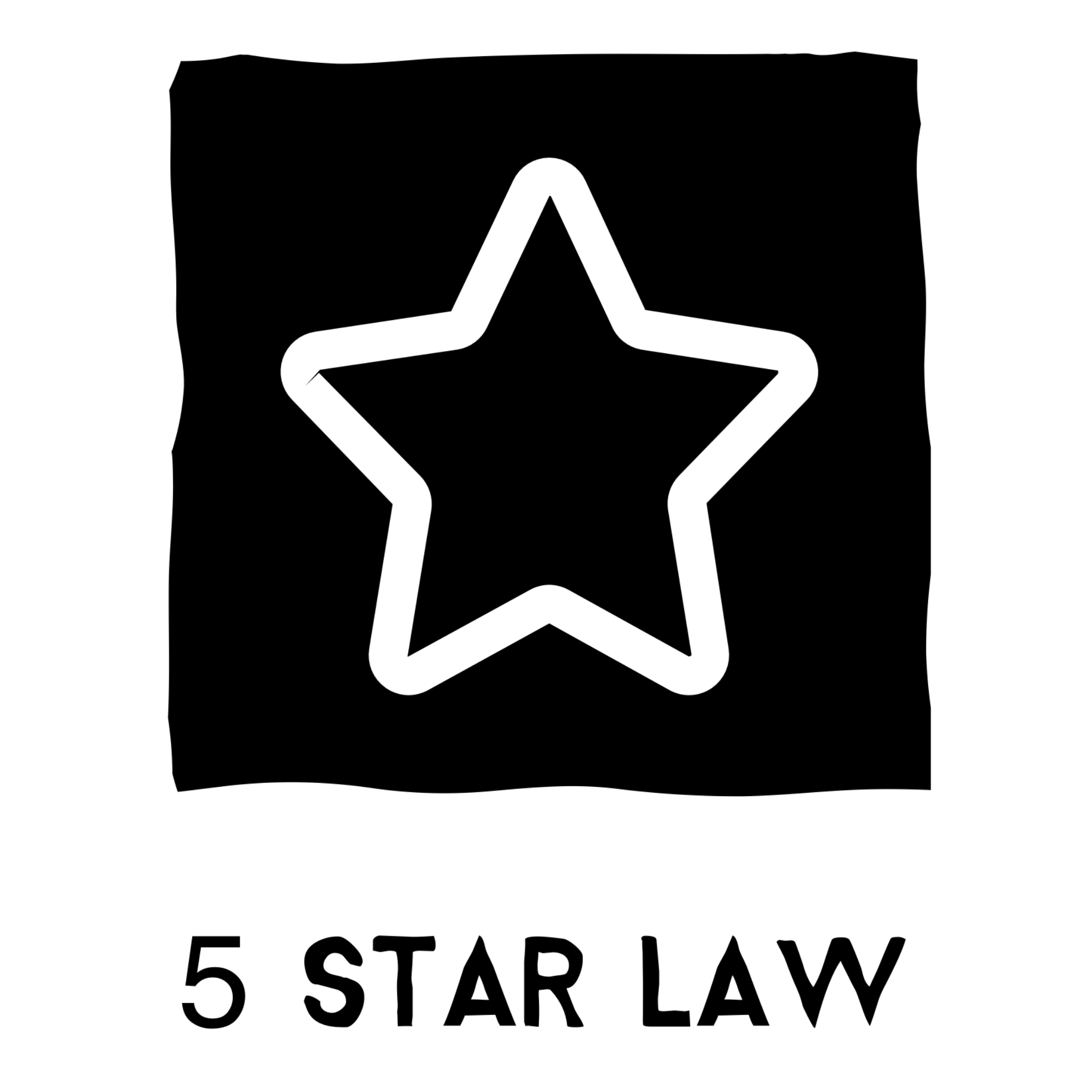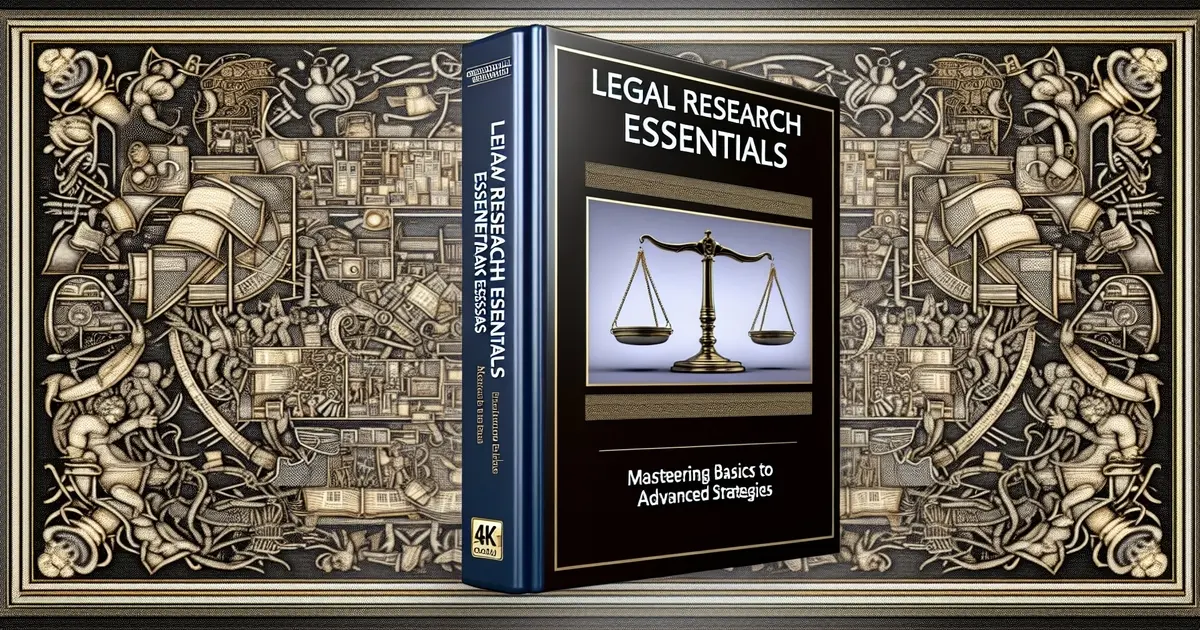Document Drafting: Essential Tips for Efficiency & Compliance
Did you know that a whopping 90% of professionals struggle with document drafting, writing drafts, and revision at some point in their careers as writers? Despite its critical importance in work, it's a skill that often needs to get the spotlight it deserves, especially for a computer writer. Whether you're whipping up drafts of a contract, penning down policies, or crafting emails as a writer who needs to hit just right, mastering document drafting and revision is like having a superpower in today's text-driven world of work.
This post dives into the nuts and bolts of effective document drafting—cutting through the jargon to give you straightforward tips and tricks to turn this daunting task into a breeze, focusing on drafts, revision, and the writer's work. So let’s roll up our sleeves and get down to work; your journey towards becoming a document drafting wizard starts here, ready to draft state-of-the-art documents.
Table Of Contents
Understanding Document Drafting in Legal Services
Clarity and Precision
Clarity and precision are not just words; they're the backbone of legal document drafting, essential in every writer's work, including corporate drafts. Every word matters. A single misplaced comma can change the meaning of a clause, leading to potential disputes or misunderstandings among writers, document drafters, corporations, and states.
Lawyers spend hours choosing the right words. As writers and document drafters, they aim for clear language that leaves no room for doubt in the state. This meticulousness in the draft state ensures that all parties, guided by the writer, understand their rights and obligations.
Protecting Interests
Document drafting is essential in safeguarding client interests. It's more than writing; it's strategizing. Lawyers consider current laws, potential future changes, and how each might affect their client.
A well-drafted document by a writer can prevent litigation by addressing possible conflicts before they arise in the state. It’s like drafting a fortress around your client’s interests, ensuring they’re protected from every angle in every state.
Types of Documents
Legal documents, including drafts, come in many forms, each serving different purposes.
- Contracts: Agreements between two or more parties.
- Wills: Instructions on distributing someone's estate after death.
- Trusts: Arrangements where one party holds property for another's benefit.
- Deeds: Documents transferring property ownership.
Understanding these differences is crucial for effective document drafting.
Best Practices for Effective Document Drafting
Simple Language
Using simple language is crucial in document drafting. It makes your documents easier to understand. This practice benefits both the writer and the reader.
Simple words and sentences help avoid confusion. They ensure that everyone can follow along, regardless of their expertise level. For example, instead of "utilize," say "use." It's straightforward and clear.
Consistency is also crucial in using simple language. Don't switch between complex and straightforward terms throughout your document. Stick to one style to keep things smooth for the reader.
Consistent Terminology
Maintaining consistent terminology ensures clarity across all documents. It avoids misunderstandings that might arise from varied word usage.
For instance, if you refer to a concept as a "contract" in one section, don't call it an "agreement" later on unless they are defined differently within your context. This consistency helps maintain a professional tone throughout the document.
Similarly, formatting should be uniform across documents. Use the same fonts, headings, and bullet styles throughout your work. This not only looks more professional but also aids in readability.
Updated Templates
Regular updates to templates are essential for compliance with current laws.
Laws change frequently; thus, updating templates ensures legal accuracy. This practice saves time by avoiding unnecessary revisions due to outdated information.
To implement this:
- Review legal updates regularly.
- Adjust templates accordingly.
- Inform team members about these changes.

Techniques for Efficient Document Creation
Bullet Points
Bullet points and numbered lists are your friends in document drafting. They break down information into digestible chunks. This makes it easier to read and understand.
Using bullet points allows you to highlight critical elements without overwhelming the reader. For example, bullet points can make each benefit stand out on its own when listing the benefits of a product.
- Clarity: Each point is distinct.
- Focus: Readers know what matters most.
- Organization: Ideas flow logically.
Numbered lists work well for instructions or steps that need following in order. They guide the reader through processes smoothly.
- First, do this.
- Then, move on to this step.
- Finally, complete this action.
This structure ensures every step is noticed and everything is clear at a glance.
Pre-drafted Sections
Incorporating pre-drafted sections saves time and maintains consistency across documents. Standard clauses only need rewriting sometimes.
Imagine creating contracts regularly where specific terms remain unchanged—like confidentiality agreements or payment terms—having this ready-to-go significantly speeds up your drafting process.
You ensure accuracy with each use because you're starting from scratch only sometimes. It also reduces the risk of errors creeping in during repetitive manual input.
Active Voice
Emphasizing active voice clarifies responsibilities within documents. It's direct and consequential, making statements easy to grasp.
Active voice makes sentences livelier by showing who does what:
- "The manager approved the project" instead of "The manager approved the project."
This clarity is essential in legal documents or guidelines where responsibility needs pinpointing without ambiguity.
By using active voice:
- Sentences become shorter.
- The text feels more engaging.
- Responsibilities are unmistakable.
Streamlining the Document Drafting Process
Standardized Templates
Adopting a standardized template is critical. This means using a pre-set format for documents of the same type. It saves time and ensures consistency.
For instance, create a report template if you're drafting reports often. Include section. Include sections like introduction, findings, and conclusion. Every time you draft a new report, use this template. You won't have to start from scratch.
Standardized templates also mean less room for error. They guide writers on what information goes where. This helps maintain quality across all documents.
Review Checklist
Implementing a review checklist is another crucial step. A checklist outlines all points that need checking before finalizing a document.
Think of it as your safety net against mistakes.
- Check spelling and grammar.
- Verify facts and figures.
- Ensure formatting aligns with guidelines.
This process minimizes revisions later on. It makes sure every document meets high standards before publication or submission.
Early Collaboration
Collaborating with stakeholders early in the drafting phase is beneficial. It involves sharing drafts with those interested in the document’s outcome—like team members or clients—for feedback.
Getting input early can highlight issues you might need help with. It also speeds up the approval process since stakeholders are involved initially.
Incorporating their feedback into your drafts reduces back-and-forth communications later.
By focusing on these strategies—adopting standardized templates, implementing review checklists, and collaborating early—the document drafting process becomes more efficient.
These methods save time and enhance the quality of documents produced.
Adopting a Human-Centric Approach in Drafting
Tailored Documents
Understanding your audience is critical. This means creating documents that match the reader's expertise level. For beginners, avoid complex jargon. Use simple language instead.
Professionals might prefer more detailed information. Here, you can include technical terms relevant to their field. Remember, the goal is clarity for all readers.
FAQs Section
Complex agreements often need to be clarified for people. A FAQ section helps enormously here.
List common questions and provide clear answers. This makes complex ideas more accessible to grasp for everyone involved.
Consider adding this section towards the end of the document or agreement. It serves as a quick reference guide for readers who may have doubts or need clarification on specific points discussed in the document.
Summaries Provided
Long documents can be overwhelming. Providing summaries at the beginning helps immensely.
Summaries give a snapshot of what's inside without reading everything first-hand. This approach respects your reader's time and attention span by allowing them to gauge relevance quickly and decide which sections warrant their full attention based on their needs or interests.
Tailoring Document Creation to Specific Needs
Jurisdictional Adjustments
Jurisdictions often have unique requirements. This means documents must be customized accordingly. For instance, legal filings in one country might need specific sections that others do not.
Adjusting documents for jurisdiction is more than changing a few words. It involves understanding the law and its application to your document's purpose. Sometimes, this may require consulting with local experts or using specialized web resources.
Audience Language
Knowing your audience is critical in document drafting. Technical audiences prefer precise language and data. Non-technical readers need simpler terms and explanations.
For technical versions, include detailed analyses and jargon relevant to the field. When targeting a non-technical audience, use analogies or stories for complex concepts. This approach ensures everyone understands your message clearly.
Cultural Considerations
Cultural nuances play a significant role in international agreements. Phrases acceptable in one culture might be offensive in another.
To navigate these differences:
- Research cultural norms.
- Ask questions when you need clarification.
- Include clauses that respect all parties' traditions.
This effort shows respect and can prevent misunderstandings later on.
Implementing Simplified Document Automation
Software Leverage
Leveraging software can transform how you handle document drafting. It makes routine tasks faster and less prone to errors. Imagine creating a contract or report with just a few clicks.
Software tools use templates for this. You pick one, fill in specific details like names or dates, and the document is ready. This saves hours of work. It's perfect for businesses that generate similar documents regularly.
Conditional Logic
Conditional logic takes automation further. It lets templates adjust based on the information you input. Say you're drafting a lease agreement; conditional logic can customize clauses based on the lease duration selected.
This means your documents are fast and tailored without manual tweaking every time. For example, if a client is from another country, specific legal clauses automatically adjust to comply with that nation's laws.
E-Signature Integration
Integrating e-signature capabilities speeds up document execution dramatically. Gone are the days of printing, signing by hand, and scanning documents back into digital form.
With e-signatures, parties can sign securely online from anywhere in the world. This quickens processes and enhances the security and traceability of essential documents.
Integrating these innovations into your workflow makes document drafting more efficient than ever. You reduce human error while ensuring each document meets specific needs, as discussed in "Tailoring Document Creation to Specific Needs." Plus, it frees up valuable time for other crucial tasks.

The Role of Technology in Enhancing Drafting Efficiency
AI Proofreading
AI tools have transformed the way we approach document drafting. By employing these advanced technologies, individuals and businesses can significantly reduce errors. These tools are not just spell checkers. They understand context, grammar, and even style to suggest improvements.
For instance, imagine you're working on a legal document or a business proposal. An AI proofreader can catch mistakes that humans might miss. This saves time and enhances accuracy. It's like having an expert editor at your fingertips 24/7.
Moreover, these tools keep learning from corrections made across countless documents worldwide. This means they get smarter over time, offering more relevant suggestions for your needs.
Collaboration Platforms
Thanks to collaboration platforms, real-time editing and feedback have become game-changers in document drafting. Tools such as Google Docs allow multiple users to work on the same document simultaneously from anywhere in the world.
This feature is handy for teams spread across different locations. Everyone can see changes as they happen, making it easier to incorporate feedback quickly.
- Pros:
- Immediate updates
- Easy access from any computer
- Streamlined communication among team members
- Cons:
- Requires internet connection
- Possible confusion with too many editors at once
Data Analytics Insight
Data analytics offer profound insights into improving future documents by analyzing past performances. Examining previous drafts can identify patterns or recurrent issues that need addressing.
Imagine looking back at several project proposals that didn't win bids. Data analytics could reveal common weaknesses or missing elements. Armed with this knowledge, you can make targeted improvements, increasing your chances of success next time around.
Data analytics turns past challenges into stepping stones for future excellence.
Legal Considerations in Document Drafting for Business
Compliance Matters
Drafting legal documents requires a deep understanding of laws. This is crucial for businesses. They must comply with both local and international regulations. Failure to do so can lead to severe penalties.
Businesses operate within complex legal frameworks. These frameworks vary from one country to another. Therefore, ensuring compliance is more complex. It involves understanding various laws that apply to business entities like corporations or general partnerships. Each entity type has rules regarding profits, debts, owners, and losses.
Intellectual Property
Intellectual property (IP) protection is more vital for businesses today than ever. Precise document wording can safeguard a company's inventions, brand identity, and original works against theft or misuse.
In the digital age, where ideas spread quickly, protecting IP through well-drafted legal documents is essential. For example, patents protect inventions, while trademarks secure brand identities. Including specific clauses about IP rights in contracts ensures these assets remain protected.
Dispute Resolution
Disputes are an inevitable part of doing business. Precise dispute-resolution mechanisms within contracts can save time and money by avoiding lengthy court battles.
Contracts should outline how disputes will be resolved through arbitration, mediation, or litigation. This clarity benefits all parties involved by providing a roadmap for resolving conflicts without damaging business relationships.
Closing Thoughts
Crafting top-notch documents isn't just about dotting your i's and crossing your t's. It's a blend of art and science, where your understanding of legal jargon meets the efficiency of modern technology. From getting the basics right in legal services to adopting cutting-edge tools for streamlining processes, we've journeyed through the essentials that make document drafting less of a chore and more of a breeze. Tailoring your approach to meet specific needs while keeping the human element at heart ensures your documents aren't just legally sound but also resonate on a personal level.
Now, it's over to you. Dive into these practices, tweak them to fit your groove, and watch as your document drafting game hits new heights. Remember, every word you pen down is a step towards more transparent communication and smoother transactions. So, why wait? Start drafting like a pro today and make every word count.
Frequently Asked Questions
What is document drafting in legal services?
Document drafting in legal services involves creating legally binding documents, such as contracts or wills. It's like putting the law into writing, ensuring everything's clear and enforceable.
How can I make my document drafting more effective?
To boost your document drafting game, focus on clarity and precision. Think of it as giving a map to someone; you want the directions to be so precise they can't get lost. Also, always keep your audience in mind – write for them.
What are some techniques for efficient document creation?
Efficient document creation starts with a solid template. Imagine building a house; having a blueprint speeds things up immensely. From there, customize details according to the task at hand.
Can technology improve my drafting efficiency?
Absolutely! Technology acts like a turbo engine in your car. Tools like automated templates or AI-driven proofreading can turn what used to take hours into minutes.
Why should I, as a document drafter, consider adopting a human-centric approach in drafting drafts for guidance and revision?
Adopting a human-centric approach means ensuring your documents speak directly to people’s needs and concerns — think of it as tailoring each piece of clothing rather than going one-size-fits-all. This way, you're likelier to hit the mark with your audience.
How does simplifying document automation help me?
Simplifying document automation streamlines repetitive tasks—imagine having an assistant who never gets tired or makes mistakes. It allows you more time to focus on your work's creative and complex parts instead of getting bogged down by monotony.
What legal considerations should I consider when drafting documents for a corporation's office, including drafts, under guidance?
When crafting business documents, remember it’s not just about dotting i’s and crossing t’s but understanding how these documents fit within broader legal frameworks—like making sure your puzzle pieces fit together and within the entire puzzle board that is industry regulation and compliance.
Related Post
Mediation Services
Have you ever found yourself in a sticky situation where every conversation, especially about news, phone changes, or specific needs, feels like walking on eggshells?
Read MoreLegal Research Essentials
Did you know that many legal professionals admit to facing challenges during legal research? It's not just about digging through hefty law books on legal topics anymore; it’s an art and science combined, requiring sharp skills and the right tools to rule effectively.
Read MoreRepresentation in Court
Navigating the maze of legal battles, the concept of representation in court, including substitute counsel and representative roles during a trial before a magistrate judge, has evolved significantly from its rudimentary origins.
Read MoreLegal Consultation
In a world where legal dilemmas can spring up as unexpectedly as a pop quiz, understanding the ins and outs of legal consultation, prospective attorney selection, alternative dispute resolution, and the chances of achieving justice have never been more crucial.
Read MoreLegal Services
Why settle for less? Finding the proper independent nonprofit support can make all the difference between success and addressing legal problems and stumbling blocks.
Read More





